Technologies
COP28 Climate Deal Marks ‘Beginning of the End’ for Fossil Fuels
A landmark agreement sees the biggest global push yet away from gas, coal and oil toward a future powered by renewable energy.
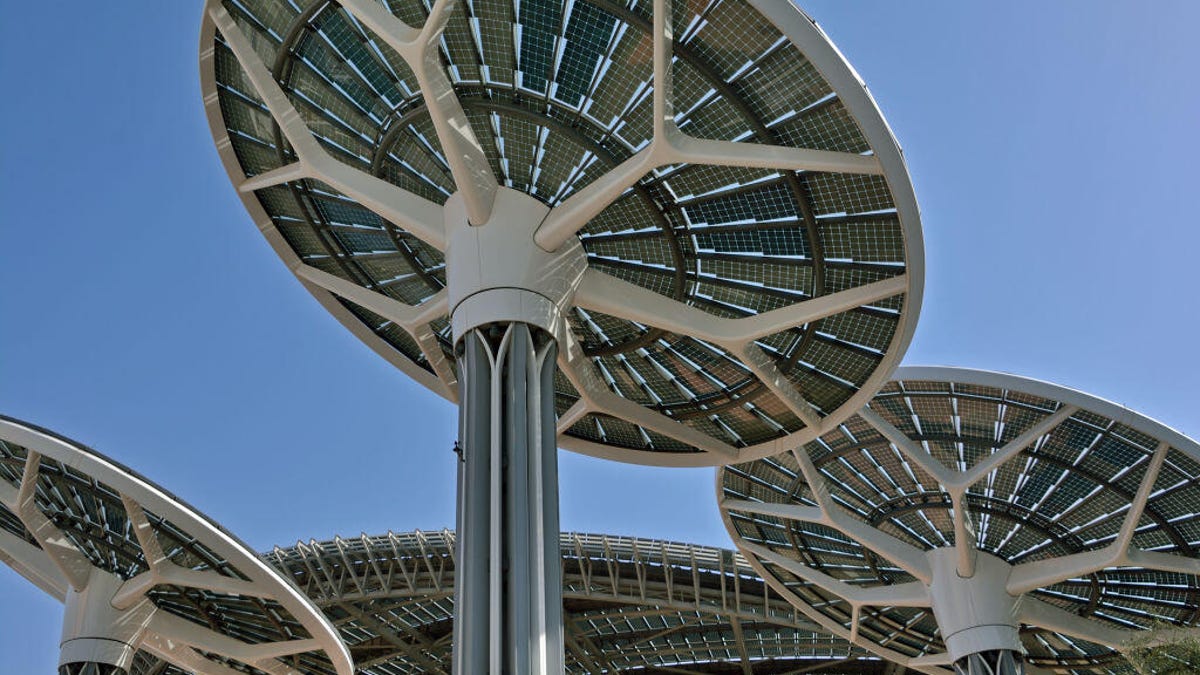
This July, as heat waves swept across Europe and the US, NASA and the European Commission’s Copernicus Climate Change Service both made a damning prediction: 2023 was set to be the hottest year on record. Now, with the Northern Hemisphere’s extreme summer heat and wildfires behind us, we’re still on track for that prediction to be correct.
Furthermore, a study led by renowned NASA climate scientist James Hansen and published in November puts us on track to blow past the threshold of 1.5 degrees Celsius of warming compared to preindustrial levels this decade, rather than next, as previously thought. This threshold marks a tipping point for our planet, after which, scientists say, Earth will experience devastating and irreversible changes that threaten lives, livelihoods and habitats.
This is the scientific reality that politicians and officials representing countries from across the world grappled with as they assembled this December in Dubai at the UN’s COP28 climate conference. Throughout the confab, they assessed countries’ progress toward meeting the goal laid out in the 2015 Paris Agreement of limiting global warming to well below 2 degrees Celsius, while working out how to wean society off fossil fuels.
The result? A landmark deal, agreed to by nearly 200 countries, to «transition away from fossil fuels» for the first time. Getting the explicit language around fossil fuels into the text was a hard-won victory — although not everyone views it that way. Climate activists, scientists and small island nations criticized a draft of the document published earlier in the week for dropping references to «phasing out» fossil fuels.
«Whilst we didn’t turn the page on the fossil fuel era in Dubai, this outcome is the beginning of the end,» UN Climate Change Executive Secretary Simon Stiell said in his closing speech. «Now all governments and businesses need to turn these pledges into real-economy outcomes, without delay.»
Whether climate summits like COP28 are an effective way to tackle the climate crisis is a heavily debated topic in environmental circles. As an attendee at the two previous climate summits (COP27 in Egypt and COP26 in Scotland), I’ve witnessed firsthand the struggle between countries to reach agreements and the frustration of other participants at the lack of ambition. The same was true in Dubai this year — perhaps more so than ever, given the looming presence of fossil fuel companies at the summit.
«The influence of petrostates is still evident in the half measures and loopholes included in the final agreement,»environmentalistand former US Vice President Al Gore said as the summit drew to a close. «Whether this is a turning point that truly marks the beginning of the end of the fossil fuel era depends on the actions that come next and the mobilization of finance required to achieve them.»
Even as scientists have been clear with their warnings about human-caused climate change, they’ve also been clear about the solutions: The transition to renewable energy sources, such as solar, hydro and wind, must be prioritized to minimize the amount of greenhouse gasses being pumped into the atmosphere. Plus, if we’re to stand a chance of creating a livable future on our planet, there can be no new development of fossil fuel projects.
This isn’t exactly what politicians want to hear. While they’re onboard with embracing and expanding renewables, many governments, including the UK and the US, continue to greenlight new gas and oil projects. But when they come together at the UN summit, other participants demand they justify their actions on the global stage, as everyone attempts to get on the same page about how to tackle the most pressing problem of our time.
«Countries are far off track in meeting climate promises and commitments,» UN Secretary General António Guterres said in a press conference in June. «I see a lack of ambition. A lack of trust. A lack of support. A lack of cooperation. And an abundance of problems around clarity and credibility.
«It’s time to wake up and step up,» he said.
As anyone will know who’s wrestled with a personal cost/benefit analysis on whether to install solar panels on their house or if it makes sense to buy an EV, trying to make the best decisions for the future of our planet isn’t always straightforward. But gatherings such as COP represent our best chance of getting everyone on the same page.
What is COP28?
COP28 is the most important event on the climate calendar. The annual global meetup this year was in Dubai in the United Arab Emirates.
The United Nations has been hosting COP (which stands for «conference of the parties») summits since 1995 as a way to gather the countries annually and assess progress in dealing with climate change. It’s at COPs that governments have signed some of the most significant climate agreements, including the 1995 Kyoto Protocol and the 2015 Paris Agreement.
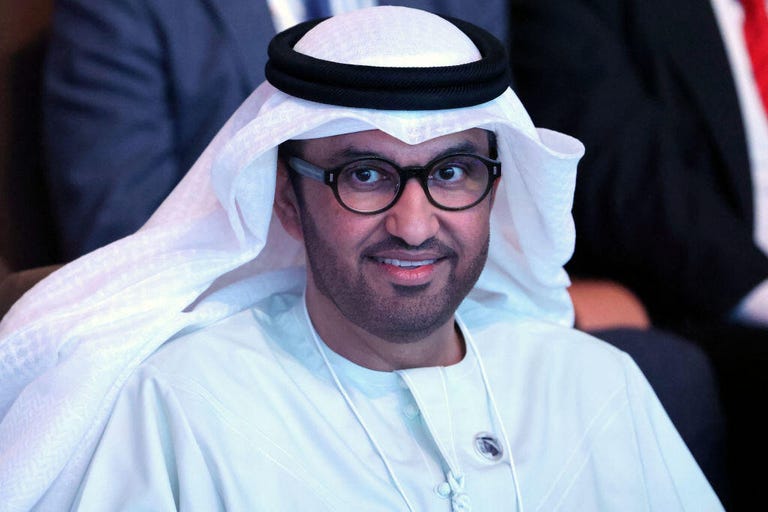
Not everyone was happy that COP28 took in the UAE, a petrostate that’s one of the top five oil-producing countries in the world. This is compounded by the fact that the man the UAE called upon to serve as president for this year’s event is Sultan Ahmed Al Jaber, the head of Adnoc, the UAE’s biggest oil company. Climate activist Greta Thunberg called the decision «completely ridiculous.»
Al Jaber, who also serves as chairman of the UAE state-owned renewables company Masdar, told The Guardian in an interview last month that while he wasn’t the obvious man for the job, he was committed to making the summit a success. «My focus is to phase out emissions from everything,» he said. «Regardless of where it comes from.»
In the week leading up to the climate talks, the BBC and Centre for Climate Reporting revealed they had obtained copies of official briefing documents in which the UAE outlined plans to discuss fossil fuel deals with nations during preliminary COP28 talks.
In the opening days of the summit, the Guardian revealed that Al Jaber had said at an event in November that there was no scientific basis for needing to phase out fossil fuels and that pursuing a full phase-out would «take the world back into caves.» Climate scientists and other critics objected heavily to this statement, arguing that phasing out fossil fuels was the only way the world stands a chance of limiting warming to 1.5 degrees.
«The COP28 agreement, while signalling the need to bring about the end of the fossil fuel era, falls short by failing to commit to a full fossil fuel phase out,» Mary Robinson, former president of Ireland, former UN human rights commissioner and chair of the Elders, said of the outcome of the summit. «If 1.5 degrees Celsius is our ‘North Star,’ and science our compass, we must swiftly phase out all fossil fuels to chart a course towards a liveable future.»
Who did (and didn’t) attend COP28, and what are they saying?
As COP28 kicked off in Dubai, the summit reported 80,000 people were registered to attend, making it the largest COP ever. The attendee list included many of the world’s most powerful and influential figures who are currently assembling under one roof to hammer out deals designed to ensure a livable future.
The White House confirmed just days before the summit started that President Joe Biden would not attend this year’s climate talks. Biden was conspicuous by his absence after previously making high-profile stops at COP27 last year in Sharm el Sheikh, Egypt, and at 2021’s COP26 in Glasgow, Scotland. He’s also talked many times about putting the climate at the heart of his administration.
In his place, Vice President Kamala Harris and Special Presidential Envoy John Kerry led a US delegation to Dubai, including senators and members of Congress. «The decision embraces transitioning away from fossil fuels in energy systems so as to achieve net zero by 2050,» said Kerry in a press conference at the close of the summit. «And the first and easiest thing that countries need to do to make this commitment a reality is to stop building new unabated coal.»
Other notable people who attended COP28 include King Charles III, a longtime supporter of environmental causes who made the opening address of the summit. He reminded attendees that «the world does not belong to us,» as he issued a call to arms to leaders attending the summit.
One high-profile, highly anticipated person was forced to bow out of COP at the last moment due to illness: Pope Francis. His visit to the UN climate summit would have been a first for any pontiff. In a papal exhortation in October, he urged governments to make COP28 a turning point. The pope called for decisive action and defended the actions of climate activists fighting for a just transition away from fossil fuels and toward renewables.
Along with the officials from government delegations, climate activists and members of civil society and nongovernmental organizations play an important role at the UN climate summit. Many of them are normal people who have become involved in the climate justice movement through local and national campaigning.
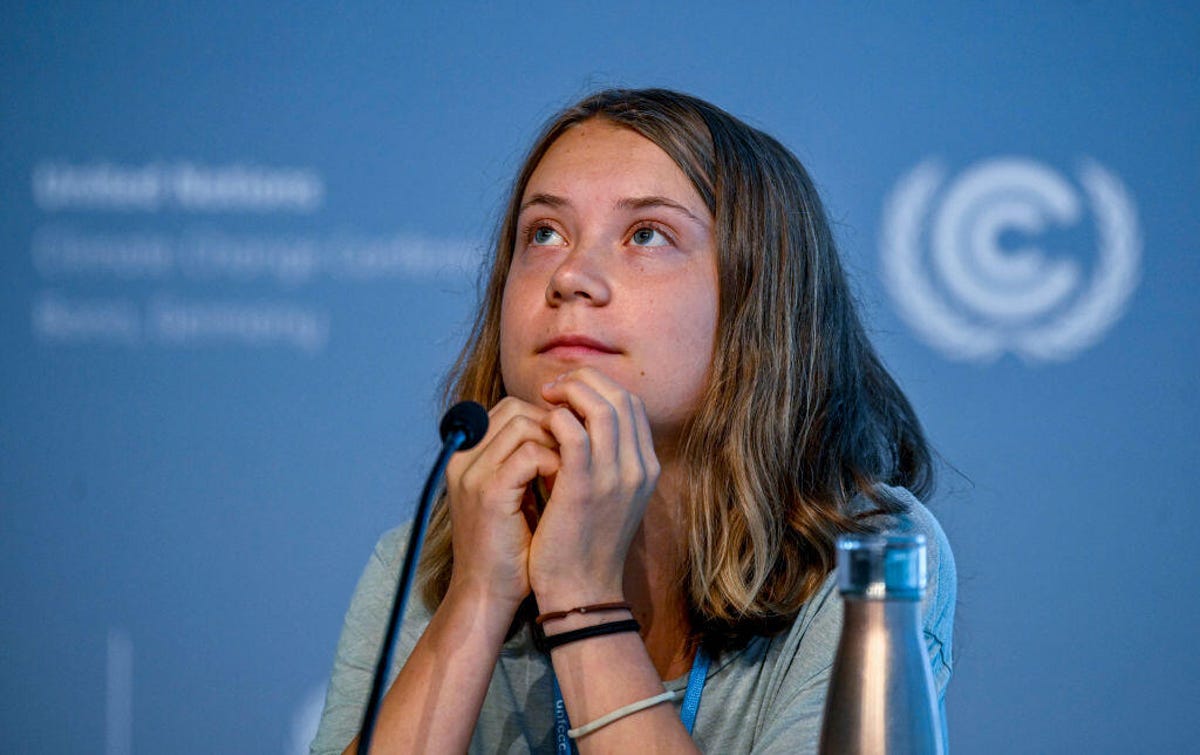
Their presence at COP is considered to be crucial, as they help to hold governments accountable when they don’t fulfill their commitments. It also means that people who are being affected by climate-related issues have their voices heard by those with decision-making power.
It’s up to individual countries as to who they include in their national delegations at COP, and for some, this means including representatives of fossil fuel companies. Last year at COP27, Global Witness counted 636 people with ties to fossil fuel companies – a number that rose to 2,456 this year.
What was on the agenda at COP28?
COP is always a highly political event, but this year the focus was on discussions about making access to renewable power more cheaply and easily available, creating green jobs and ensuring that people around the world have access to fresh air, clean water and a healthy environment to live and work in.
The agenda for COP28 was dictated largely by the president of the event, who is chosen by and from the host nation. This summer, Al Jaber outlined four priorities for the summit:
- Fast-tracking the renewable energy transition.
- Fixing climate finance by securing funding for the most affected, lower-income countries from wealthier, high-polluting countries.
- Focusing on people, livelihoods and nature.
- Making this the most inclusive UN climate summit to date.
Preliminary talks ahead of the summit saw an agreement to phase out fossil fuels rise to the top of expected outcomes for COP28. This would be an important step after two years ago in Glasgow, when language in the final agreement around ending reliance on coal was watered down at the last moment to read «phase down» rather than «phase out.»
These small differences have caused huge divisions between countries at previous climate conferences, and did so again at COP28, where many countries walked away from the talk frustrated at the vague reference to «transition away» from fossil fuels. «The resolution is marred by loopholes that offer the fossil fuel industry numerous escape routes, relying on unproven, unsafe technologies,» said Harjeet Singh, head of global political strategy at Climate Action Network International.
Still, the inclusion of language around fossil fuels has been hailed as breakthrough. Brokering such an agreement was a tough task for Al Jaber, and until late in the day, it looked like it might not happen.
The deal was far from the only important outcome to emerge from COP27. On the opening day of the summit, the UN announced a partnership with Microsoft that will see it use an AI-powered tool to measure how well countries are following through on their climate pledges, The New York Times reported. COP’s detractors, including climate activist Greta Thunberg, frequently criticize the conference for putting too much emphasis on empty promises (or «blah blah blah,» as Thunberg calls it) that yield little to no action. If it works as promised, the UN and Microsoft’s use of AI could significantly improve accountability and highlight the countries not pulling their weight.
One anticipated source of tension was around financing climate reparations. But the first announcement out of COP28 confirmed that a deal had been struck to establish a loss and damage fund. This was an early win for Al Jaber, but more significantly for the civil society groups and climate justice activists who have been fighting for decades for a breakthrough that will hopefully see compensation reach those who are most impacted by climate change but have done the least to cause it.
For more on the key outcomes of COP28, Carbon Brief has a comprehensive list of announcements and deals. The US made many announcements at the summit, all which can be found here.
Next year’s summit, COP29, is set to be held in Azerbaijan. Between now and then, there is much work for all the countries involved in the UN process to be getting on with — namely, working hard and fast to meet their net zero commitments. «Climate action must not cease because the gavel has come down on COP28,» Robinson said. «World leaders must continue to urgently pull together and find ways forward to tackle this existential threat. Every day of delay condemns millions to an uninhabitable world.»
Technologies
Today’s NYT Strands Hints, Answers and Help for Nov. 28 #635
Here are hints and answers for the NYT Strands puzzle for Nov. 28, No. 635.
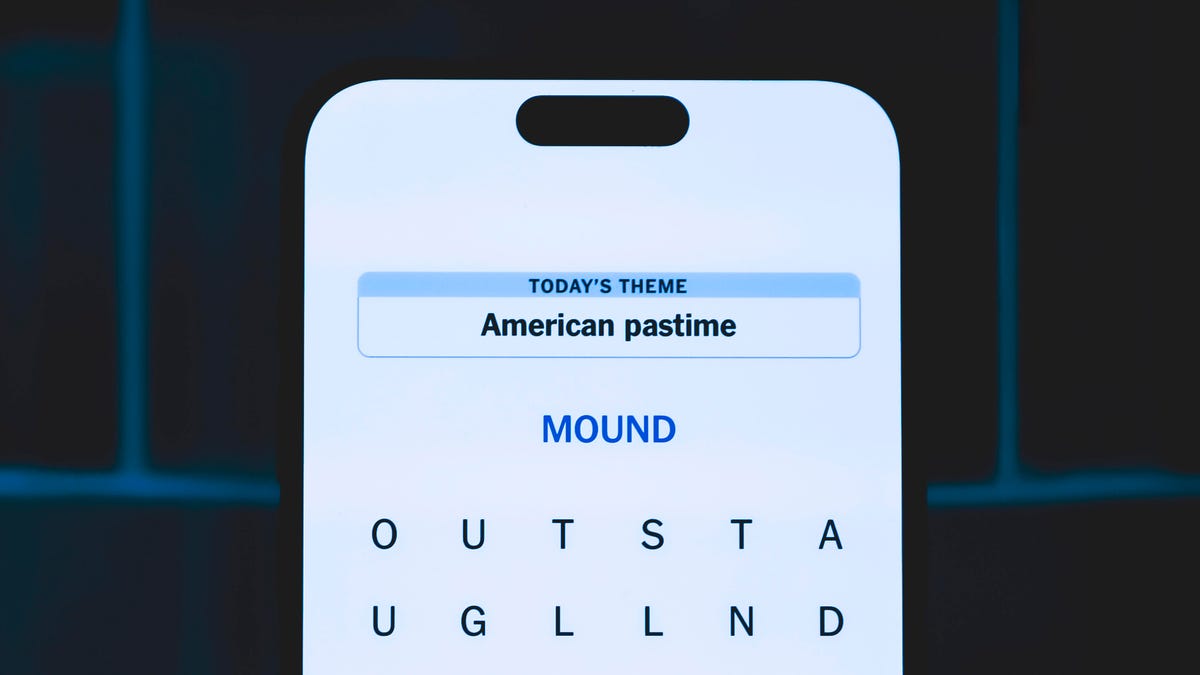
Looking for the most recent Strands answer? Click here for our daily Strands hints, as well as our daily answers and hints for The New York Times Mini Crossword, Wordle, Connections and Connections: Sports Edition puzzles.
Today’s NYT Strands puzzle is pretty tricky. If you’re not familiar with certain superstitious beliefs, you might not find all the answers. And some of the answers are difficult to unscramble, so if you need hints and answers, read on.
I go into depth about the rules for Strands in this story.
If you’re looking for today’s Wordle, Connections and Mini Crossword answers, you can visit CNET’s NYT puzzle hints page.
Read more: NYT Connections Turns 1: These Are the 5 Toughest Puzzles So Far
Hint for today’s Strands puzzle
Today’s Strands theme is: If all else fails…
If that doesn’t help you, here’s a clue: Don’t tell, it won’t come true.
Clue words to unlock in-game hints
Your goal is to find hidden words that fit the puzzle’s theme. If you’re stuck, find any words you can. Every time you find three words of four letters or more, Strands will reveal one of the theme words. These are the words I used to get those hints but any words of four or more letters that you find will work:
- GLUB, RATS, TARN, DALE, FONT, FOUNT, LASH
Answers for today’s Strands puzzle
These are the answers that tie into the theme. The goal of the puzzle is to find them all, including the spangram, a theme word that reaches from one side of the puzzle to the other. When you have all of them (I originally thought there were always eight but learned that the number can vary), every letter on the board will be used. Here are the nonspangram answers:
- DANDELION, STAR, COIN, FOUNTAIN, LADYBUG, EYELASH
Today’s Strands spangram
Today’s Strands spangram is MAKEAWISH. To find it, start with the M that’s three letters down on the far right, and wind backwards.
Technologies
Today’s NYT Connections Hints, Answers and Help for Nov. 28, #901
Here are some hints and the answers for the NYT Connections puzzle for Nov. 28, #901.
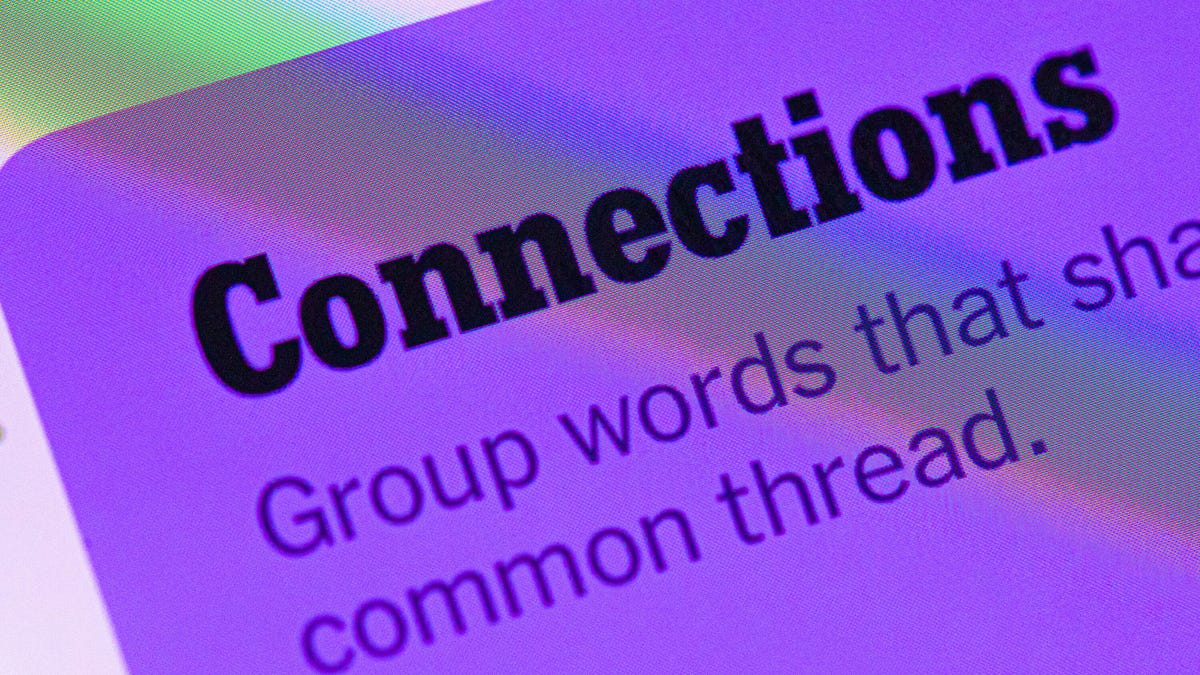
Looking for the most recent Connections answers? Click here for today’s Connections hints, as well as our daily answers and hints for The New York Times Mini Crossword, Wordle, Connections: Sports Edition and Strands puzzles.
Today’s NYT Connections puzzle is kind of tough. If you need help sorting the answers into groups, you’re in the right place. Read on for clues and today’s Connections answers.
The Times now has a Connections Bot, like the one for Wordle. Go there after you play to receive a numeric score and to have the program analyze your answers. Players who are registered with the Times Games section can now nerd out by following their progress, including the number of puzzles completed, win rate, number of times they nabbed a perfect score and their win streak.
Read more: Hints, Tips and Strategies to Help You Win at NYT Connections Every Time
Hints for today’s Connections groups
Here are four hints for the groupings in today’s Connections puzzle, ranked from the easiest yellow group to the tough (and sometimes bizarre) purple group.
Yellow group hint: Appropriate.
Green group hint: I win!
Blue group hint: Musical instrument.
Purple group hint: Time to talk.
Answers for today’s Connections groups
Yellow group: Fitting.
Green group: Achieve victory over.
Blue group: Parts of an electric guitar.
Purple group: Phonetic elements of speech.
Read more: Wordle Cheat Sheet: Here Are the Most Popular Letters Used in English Words
What are today’s Connections answers?
The yellow words in today’s Connections
The theme is fitting. The four answers are fair, just, proper and right.
The green words in today’s Connections
The theme is achieve victory over. The four answers are beat, best, take and worst.
The blue words in today’s Connections
The theme is parts of an electric guitar. The four answers are fret, peg, pickup and string.
The purple words in today’s Connections
The theme is phonetic elements of speech. The four answers are intonation, loudness, rhythm and stress.
Technologies
Anker’s New MagSafe Car Mount Keeps Your Phone Cool While Charging, and It’s 30% Off for Black Friday
Get wired-like charging speeds and MagSafe compatibility with Anker’s wireless car charging bundle for $62.99.
Black Friday is the best time of the year to upgrade the little essentials that make your everyday tech life more pleasant. I’ve found the perfect deal to amp up the phone charging setup in your car. This Anker MagSafe wireless car charging bundle is 30% off for the holidays, and it gives your iPhone a fast and steady way to power up while you navigate. It delivers up to 25-watt wireless charging speeds and with onboard active cooling, your phone stays comfortable to the touch.
Get it now for $62.99 verses the list price of $89.99.
What sets this charger apart is that its performance and cooling tech is built into a surprisingly compact package. The stand uses an ultra-strong Qi2 magnetic lock to keep your phone secure through bumps and turns. You can even tilt the mount and switch between portrait and landscape modes for navigation without blocking the view. The bundle has everything you need to get started including a 60-watt dual-USB-C charger, an adequately long USB-C cable, and cable organizers for a clean setup. Anker also includes a two-year warranty for peace of mind.
If you are getting your car prepped up for driving to a holiday vacation or just need a faster charging mount for your daily commute, this deal makes a lot of sense. CNET’s experts are also tracking more Black Friday and Cyber Monday picks across Apple products, headphones, and more, so you can score more savings before the sales season wraps up.
MOBILE DEALS OF THE WEEK
-
$749 (save $250)
-
$475 (save $175)
-
$499 (save $300)
-
$900 (save $400)
Why this deal matters
A high quality charger is a great addition to any car to speedily top up your phone on the go. You will especially want to look out for options from a top-tier brand like Anker for its fast charging speeds and reliability. This Black Friday deal is an excellent opportunity to save big on a staple car accessory. With holiday shopping heating up and tech accessories being one of the most popular categories, we expect the deal to sell out quick. So don’t wait too long before jumping on it.
Don’t miss any of our unbiased tech content and lab-based reviews. Add CNET as a preferred Google source.
Join Our Daily Deals Text Group!
Get hand-picked deals from CNET shopping experts straight to your phone.
By signing up, you confirm you are 16+ and agree to receive recurring marketing messages at the phone number provided. Consent is not a condition of purchase. Reply STOP to unsubscribe. Msg & data rates may apply. View our Privacy Policy and Terms of Use.
-

 Technologies3 года ago
Technologies3 года agoTech Companies Need to Be Held Accountable for Security, Experts Say
-

 Technologies3 года ago
Technologies3 года agoBest Handheld Game Console in 2023
-

 Technologies3 года ago
Technologies3 года agoTighten Up Your VR Game With the Best Head Straps for Quest 2
-

 Technologies4 года ago
Technologies4 года agoBlack Friday 2021: The best deals on TVs, headphones, kitchenware, and more
-

 Technologies4 года ago
Technologies4 года agoVerum, Wickr and Threema: next generation secured messengers
-

 Technologies4 года ago
Technologies4 года agoGoogle to require vaccinations as Silicon Valley rethinks return-to-office policies
-

 Technologies4 года ago
Technologies4 года agoOlivia Harlan Dekker for Verum Messenger
-

 Technologies4 года ago
Technologies4 года agoiPhone 13 event: How to watch Apple’s big announcement tomorrow
